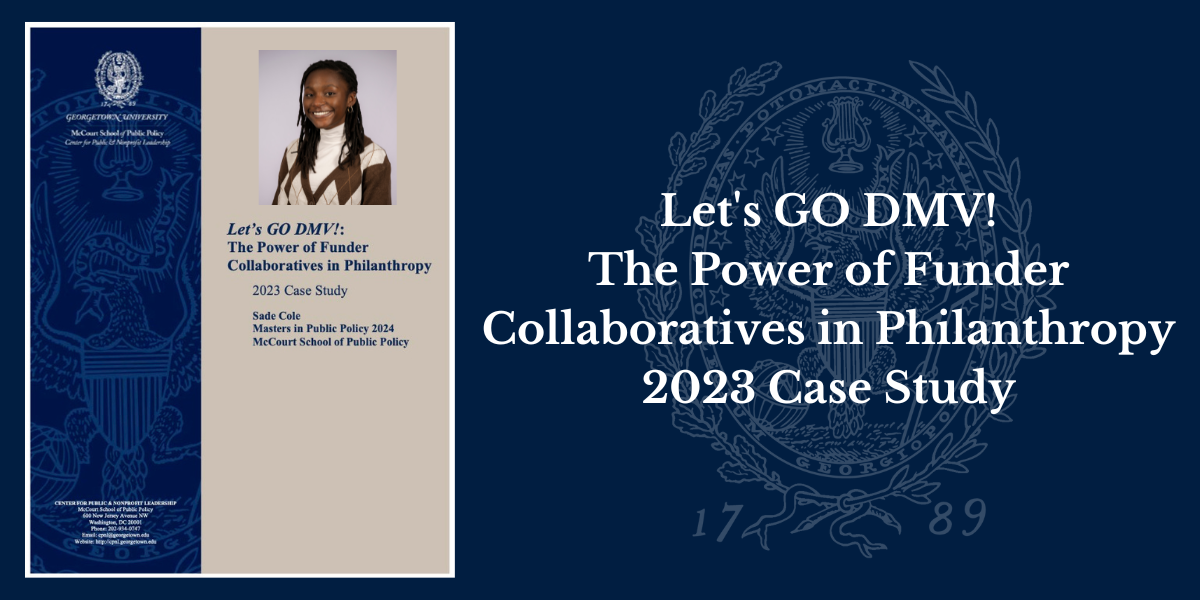Case Study: Let’s GO DMV! The Power of Funder Collaboratives in Philanthropy

Posted in News Story
During the 2022-2023 academic year, the Center for Public and Nonprofit Leadership provided opportunities for McCourt School graduate students to join the Center and conduct independent research. As a Pablo Eisenberg Public Interest Research Fellow, Sade Cole wrote a case study on The Table, a partnership of six organizations in Washington, DC that lead the Let’s Guarantee Opportunity (GO) DMV! Program.
Throughout her research on the Let’s GO DMV! Program, a five year pilot program that provides guaranteed income to hospitality workers in the Washington DC region (DC, Northern Virginia, and Prince George’s County, MD), Sade focused on the importance of funder collaboratives, like the Table, that create a greater impact and can develop opportunities for larger systemic changes. Funder collaboratives occur when different organizations, individuals, governmental entities, families, and foundations join forces to accomplish a common goal. In 2021, The Table was officially formed with six organizations; if, A Foundation for Radical Possibility, Washington Regional Association of Grantmakers (WRAG), Amalgamated Bank, Amalgamated Foundation, Greater Washington Community Foundation, and Restaurant Opportunities Center of DC (ROC-DC).
By conducting interviews with members from the Table, as well as partners and program participants from Let’s GO DMV!, Sade learned how the Table was a successful funder collaborative model through its organizational structure, shared strategic vision, and key communication and decision making practices.
Through this collaboration, organizations were able to combine their different backgrounds, expertise, and knowledge to ensure the success of the guaranteed income pilot program. For example, ROC-DC was an important link to the community whereas WRAG had the knowledge and capacity as relationship builders to help foundations better understand the possibilities of impact investing. Additionally, Amalgamated Bank and Amalgamated Foundation brought the financial know-how and expertise in impact investing. The Community Foundation had a breadth of knowledge, experience and relationships in philanthropy, investing and community. Through monthly meetings, frequent communications between working groups, and shared decision making through a consensus model, the Table allowed its members to support each other when capacities were limited.
The Table is also a unique funder collaborative because it was initiated by the participants in the program, and the hospitality workers are kept at the center of the program through their ongoing participation in The Table. Veronica “Vee” Tucker, a member of the Table, stressed the power of community within their work, noting “I can’t think of a time when community hasn’t been centered because people from the community are a part of the table group.” Caitlin Duffy emphasized the importance of collaboration and shared capacity, saying “The power of relationships has carried us through.”
This case study on the Table provides an example of how funder collaboratives can be used to advance systems change.
Read the entire case study here.
